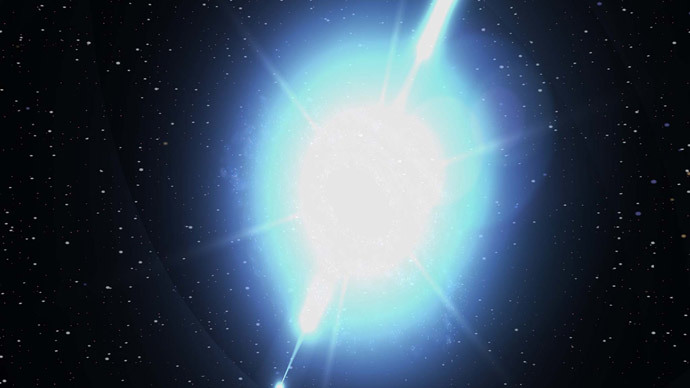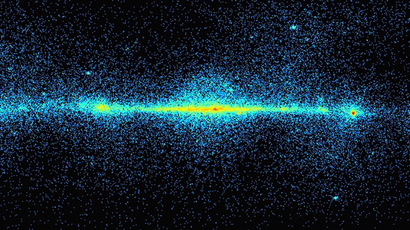Telescope captures spectacular hypernova blast – from 12 billion years ago

A Texas observatory has captured a powerful gamma-ray burst – the violent death of a massive star – that happened relatively “soon’” after the Big Bang. Understanding such hard-to-spot events gives us insight into how the early universe developed.
While the observation was published only this week, the transient flash of the dying star GRB 140419A was detected on April 19 by NASA’s space satellite, which relayed the info an automated telescope belonging to Southern Methodist University (SMU).
It is only these sophisticated and integrated technologies that allow us to systematically observe gamma-ray bursts, mysterious phenomena that were only discovered in the 1960s.
“Gamma-ray bursts are the most powerful explosions in the universe since the Big Bang. These bursts release more energy in 10 seconds than our Earth’s sun during its entire expected lifespan of 10 billion years,” said Farley Ferrante, the SMU student who monitored the event.
Like some other similar disintegrations, GRB 140419A might have been a star up to 50 times bigger than our sun that ran out of fuel, and collapsed upon itself, creating a black hole – a mass so dense and with so much gravity that nothing can escape it. The explosion happened relatively soon – 1.7 billion years – after the Big Bang, which occurred 13.82 billion years ago.
“Considering this thing was at the edge of the visible universe, that’s an extreme explosion. That was something big. Really big,” said Robert Kehoe, the leader of SMU’s astronomy team.

While, theoretically about one gamma-ray burst a day could be detected from Earth, it was hard to capture almost any of these events until the 1990s. Gamma rays – which have the smallest wavelength on the electromagnetic spectrum – are invisible and relatively hard to detect, while the “flashes” sometimes last less than two seconds.
A breakthrough was achieved a decade ago when NASA set up the Gamma Ray Burst Coordinates Network, which passes information from satellites to hundreds of telescopes on the ground, in the hope that they are either accidentally tuned to the right place in the sky, or can be recalibrated before it is too late.
The success rate is still variable.
But when events such as the demise of GRB 140419A are captured the results help astrophysicists glimpse into how the galaxy expanded in its early years.
“At the time of this gamma-ray burst’s explosion, the universe looked vastly different than it does now,” Kehoe said. “It was an early stage of galaxy formation. There weren’t heavy elements to make Earth-like planets. So this is a glimpse at the early universe. Observing gamma-ray bursts is important for gaining information about the early universe.”














